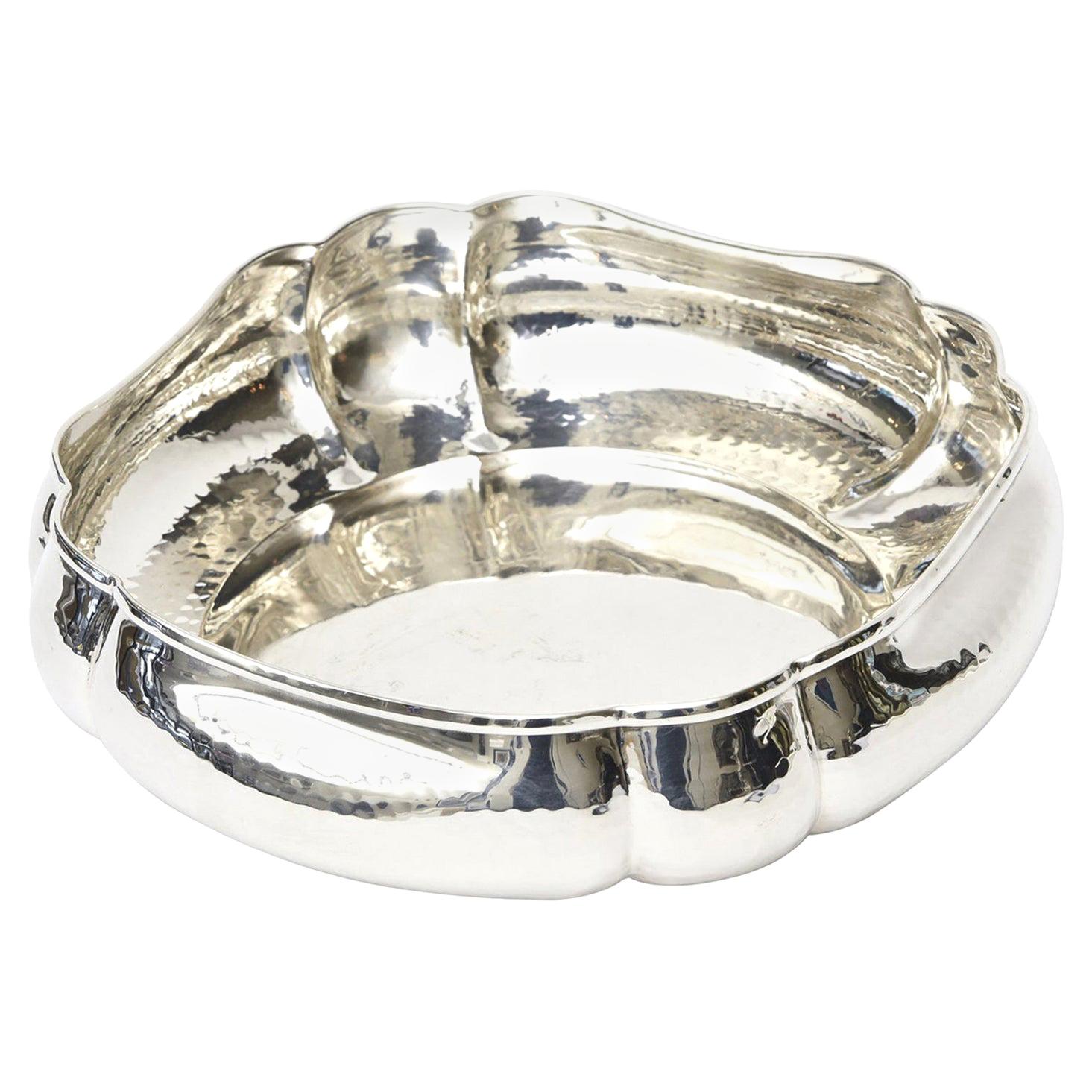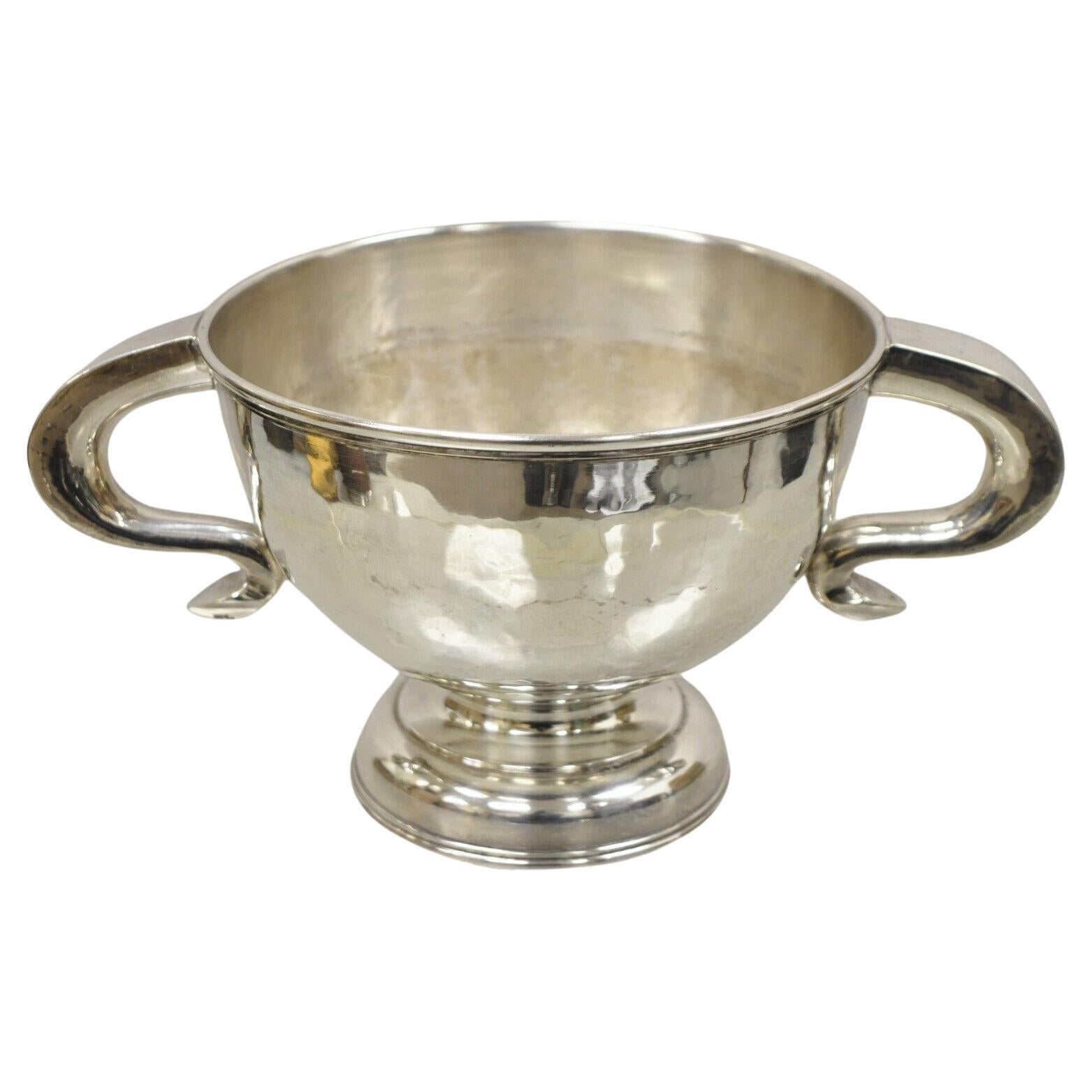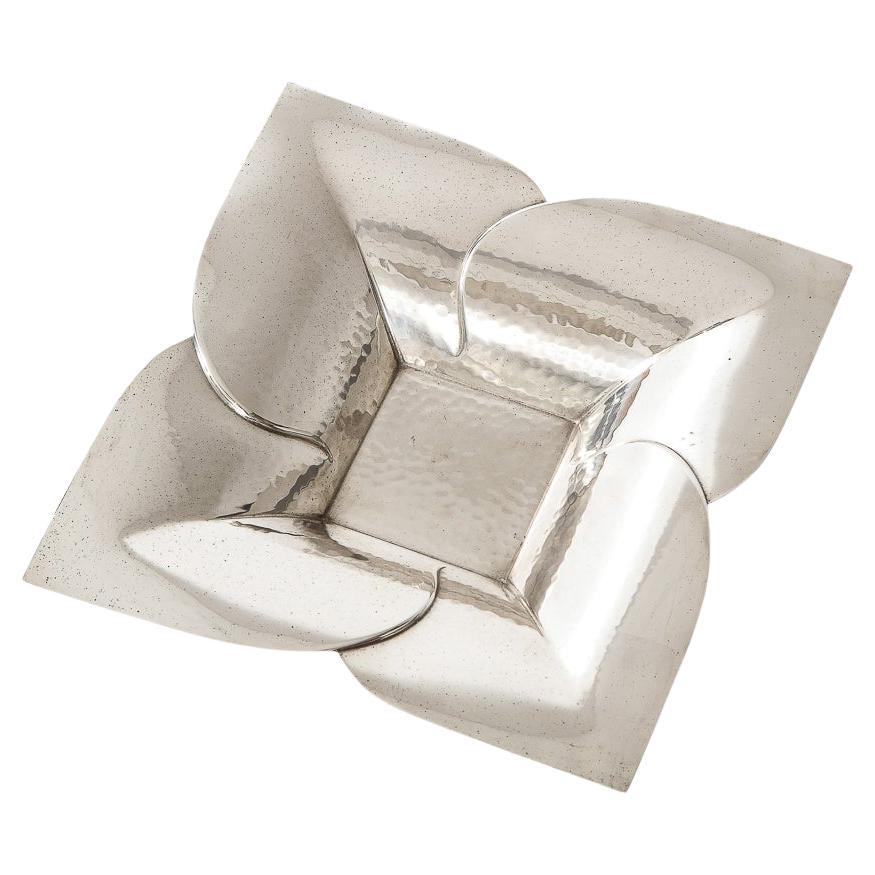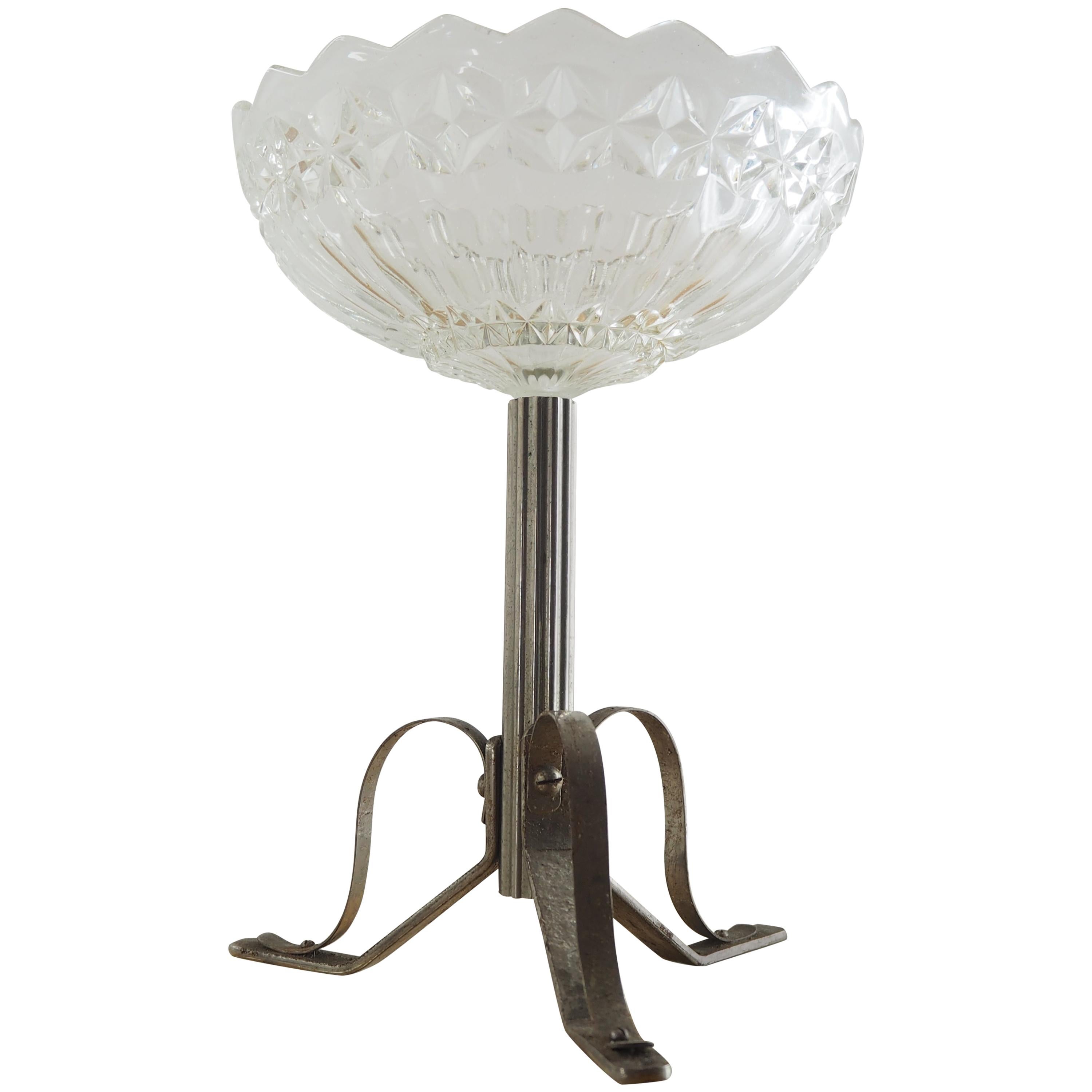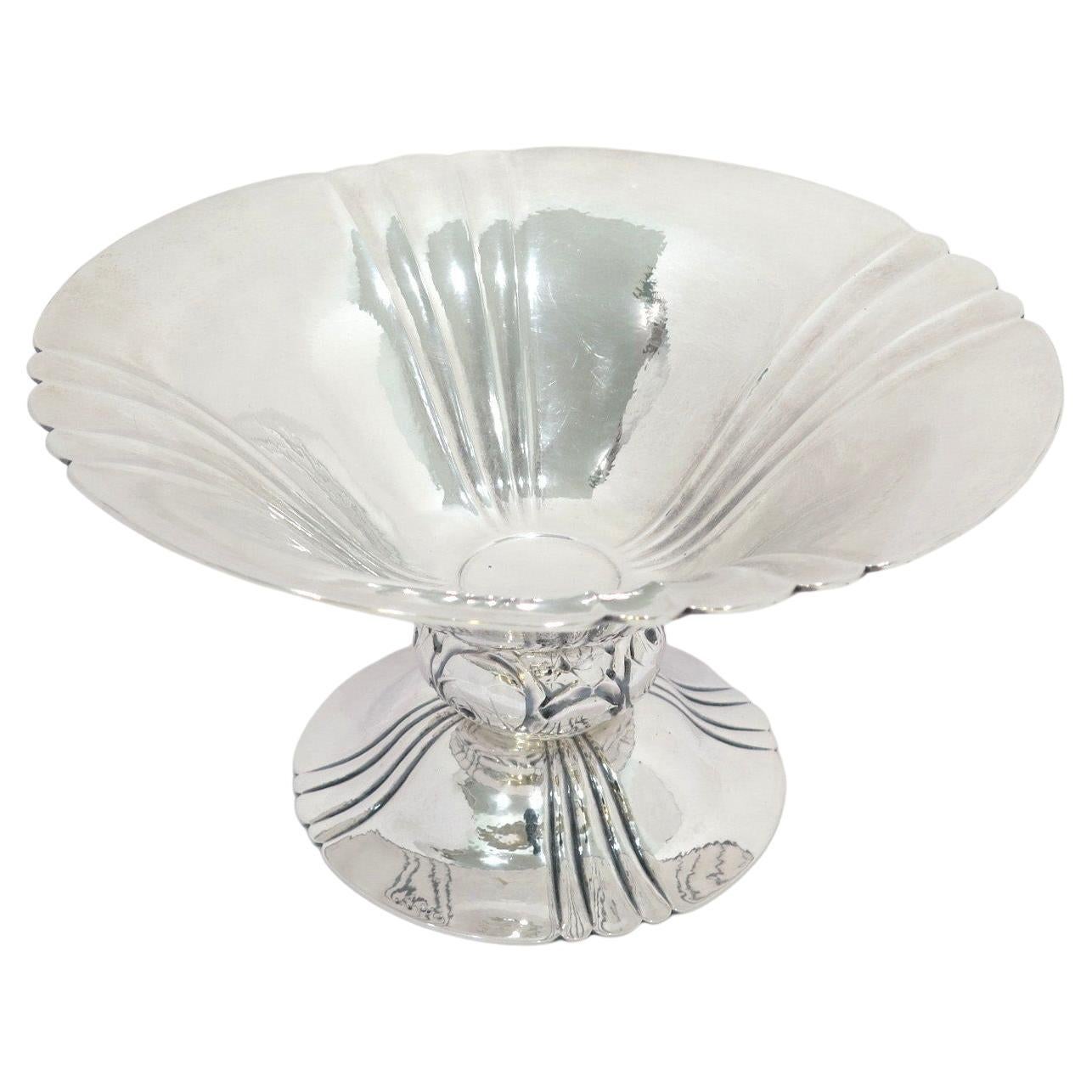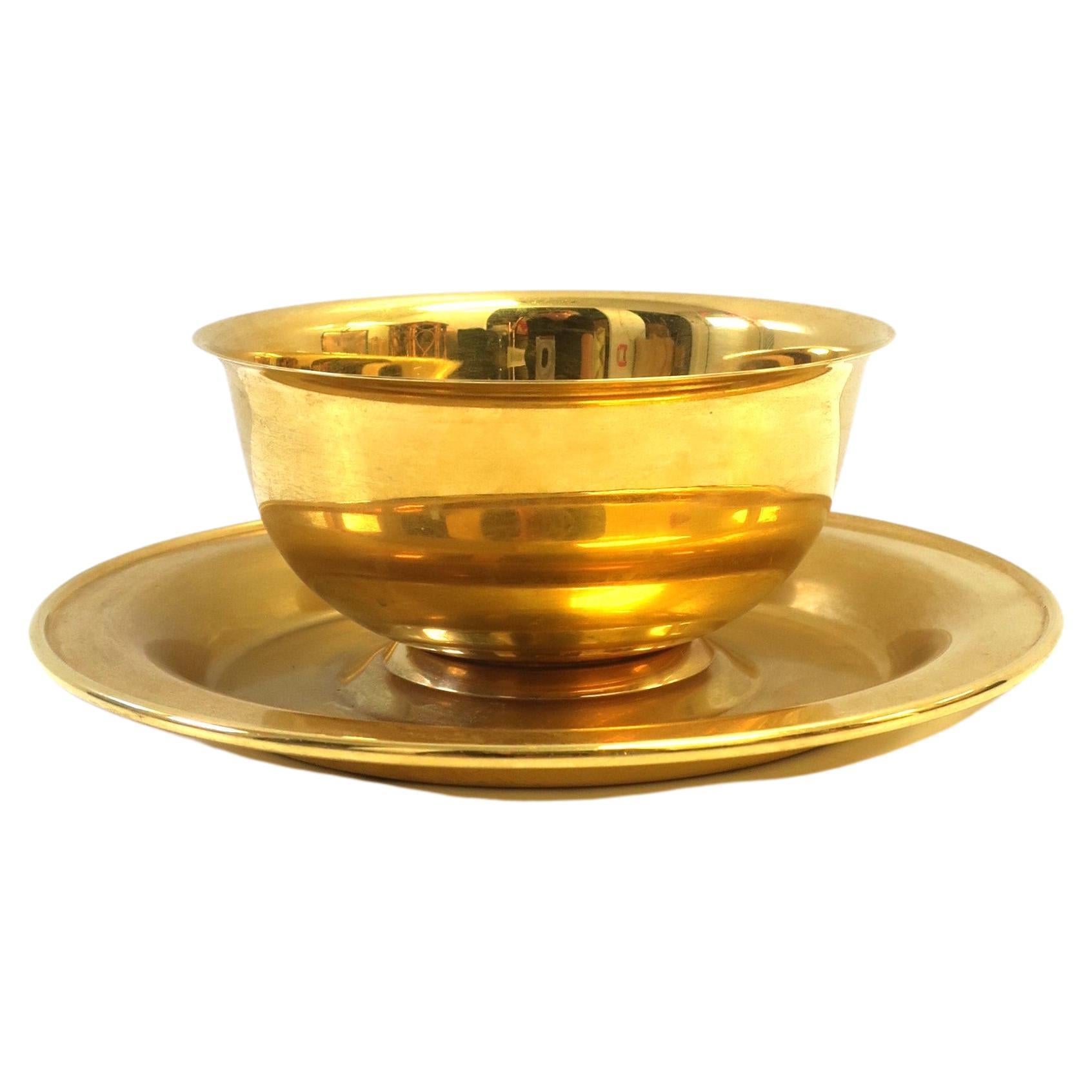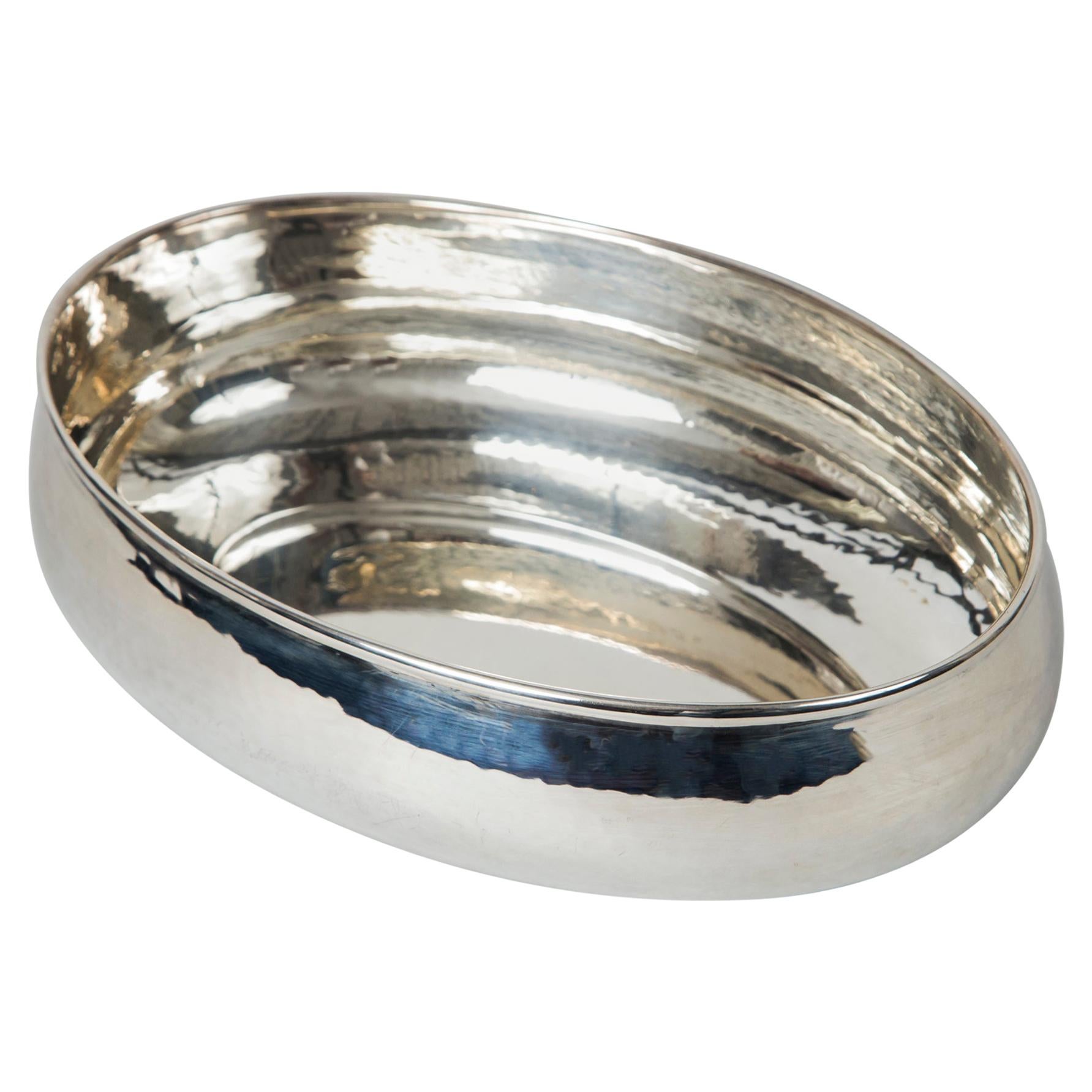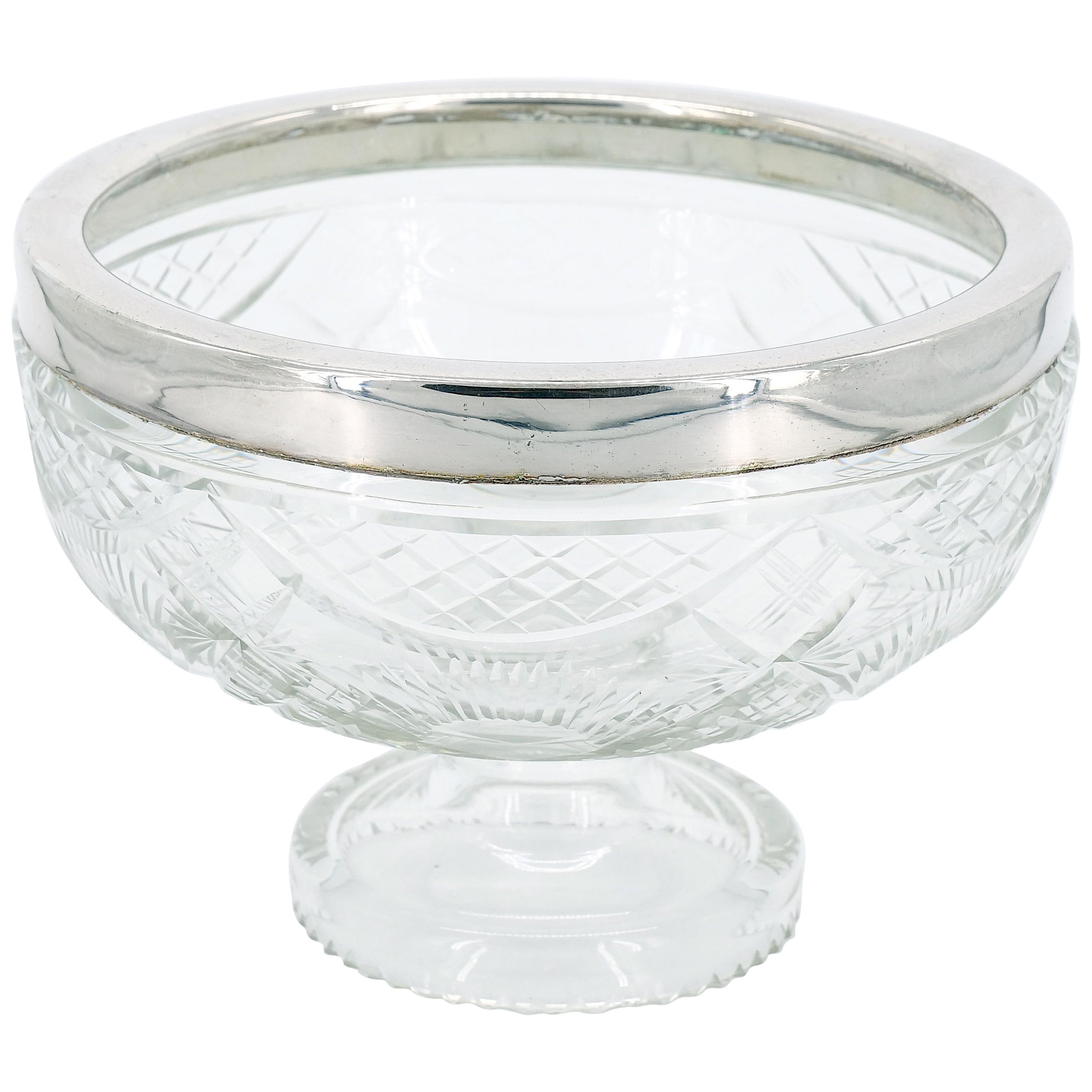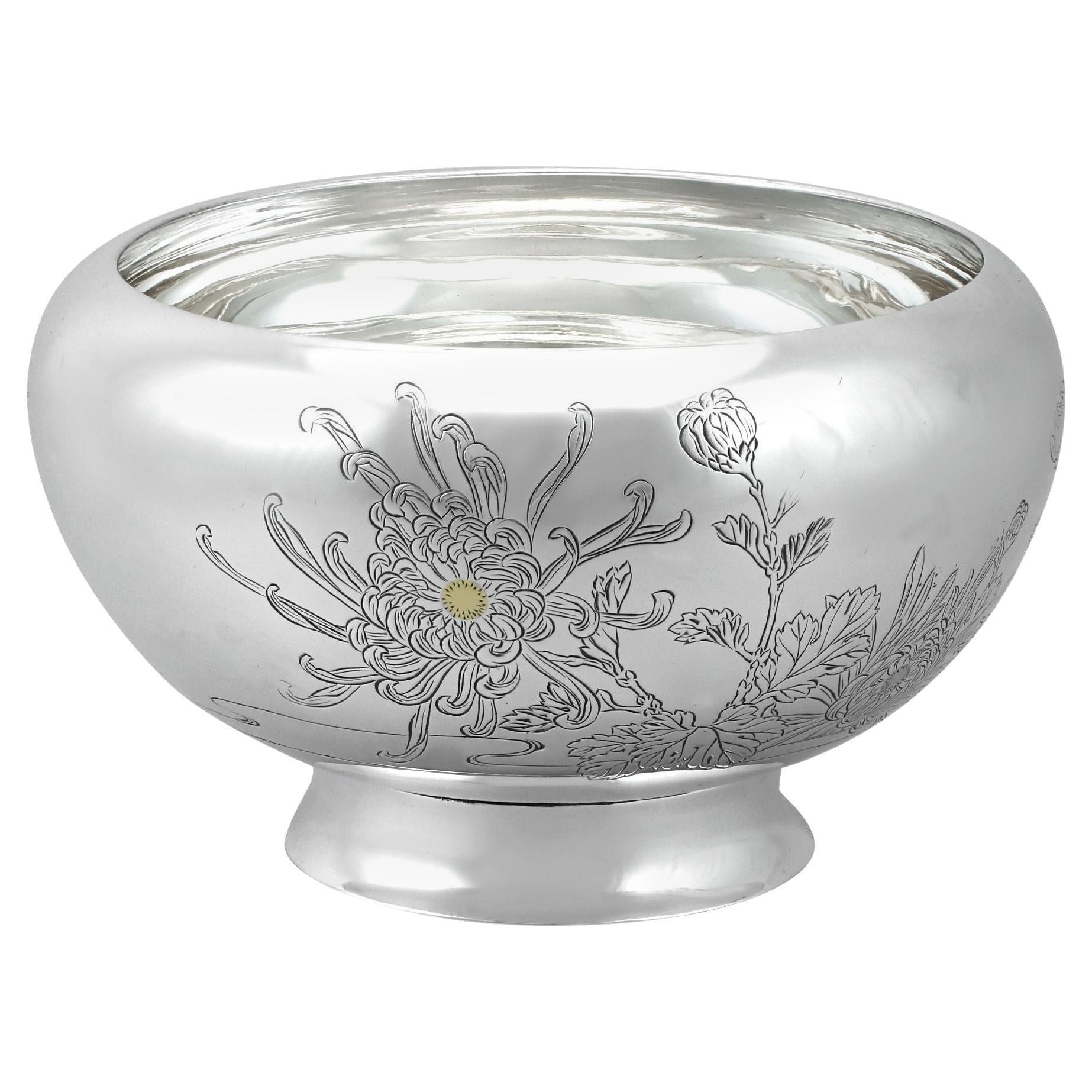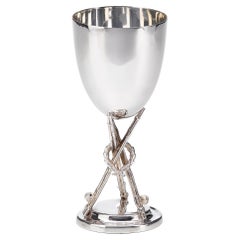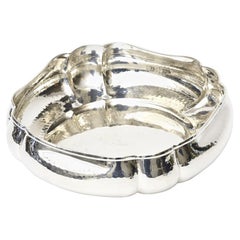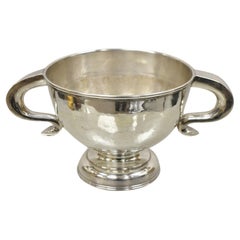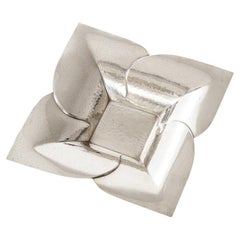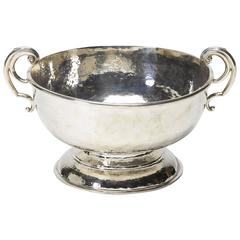
British Silver-Plated and Hammered Serving Bowl Trophy, Circa 1920
View Similar Items
Want more images or videos?
Request additional images or videos from the seller
1 of 2
British Silver-Plated and Hammered Serving Bowl Trophy, Circa 1920
About the Item
- Dimensions:Height: 5.5 in (13.97 cm)Width: 12.5 in (31.75 cm)Depth: 10 in (25.4 cm)
- Period:
- Date of Manufacture:1920-1940
- Condition:Wear consistent with age and use.
- Seller Location:Colorado Springs, CO
- Reference Number:1stDibs: LU90973200962
About the Seller
4.9
Platinum Seller
These expertly vetted sellers are 1stDibs' most experienced sellers and are rated highest by our customers.
Established in 2010
1stDibs seller since 2011
400 sales on 1stDibs
More From This SellerView All
- Silver Plated Fishing Reel TrophyLocated in Colorado Springs, COThis silver trophy was designed to celebrate the winner of an angling competition. Three fishing rods with large reels intersect over one another, forming a three-pronged base for the trophy. Looped onto the rods is a wreath, signifying victory for the recipient of the trophy. The chalice of the trophy is clear and nondescript, free of any markings or initials. Well maintained and sturdy, this is an excellent example of antique silver craftsmanship. Sportfishing began in earnest in 15th century England...Category
Early 20th Century Art Deco Sheffield and Silverplate
MaterialsSilver
- Sterling Silver Cricket Trophy, circa 1923Located in Colorado Springs, COThis is a handsome sterling silver trophy dating to circa 1923. Detailed in raised relief on the the goblet-shaped trophy is an energetic cricket scene. It shows a cricket batter as ...Category
Vintage 1920s British Sports Equipment and Memorabilia
MaterialsSterling Silver
- Silver Plated Airplane-Themed Tableware, circa 1910Located in Colorado Springs, COThis is a beautiful silver-plated egg cup and spoon set with an airplane motif, dating to the early 1910s. The set includes four matching footed egg cups. The cups sit upon the stack...Category
Vintage 1910s English Art Deco Sheffield and Silverplate
MaterialsSilver
- Hallmarked Silver Plated Keepsake Box, Sheffield, UK, circa 1900Located in Colorado Springs, COOffered is a stunning silver plated keepsake box dating to 1900, with associated hallmark. This small box includes a wooden interior with two slots and a blank square on top where initials could have been engraved. A well maintained, elegant piece, this antique silver box is an excellent addition to any silver or home decor collection. Trinket or keepsake boxes have taken on many forms since their first conception in ancient times. However their purpose remains the same; to store jewelry and other items precious to the owner. Originally, these boxes were used specifically for jewelry. These were in common use as early as 5000 BC in Ancient Egypt, when the majority of Egyptians, both male and female, wore jewelry. Boxes were used to keep these gemstone encrusted items safe. In Ancient Rome, jewelry was a status symbol. Rings and brooches were utilized to represent ones status in society. Again, boxes were needed for security and storage purposes. Finding early examples of these are quite rare. Victorian and Edwardian examples of trinket boxes are far more common. This is because owning jewellery was a luxury until the Victorian era- let alone possessing so much a box was needed to store it all. Fine jewelry and other items became available to the masses after the industrial revolution due to the reduction in production costs. This led to a demand for trinket boxes, which were much smaller than jewelry boxes and therefore better suited to the needs of the middle class who did not yet possess an abundance of jewelry. In Victorian households, collectables and other items of interested were also stashed inside these boxes. This is why they are known as trinket or keepsake boxes, rather than just jewelry boxes, although of course jewelry was also stored in them. Trinket boxes were produced in large numbers around this time. Many were lined with colored plush or velvet or rich wood. More elaborate designs had interior divisions and trays for rings and other pieces of jewellery. It was also common to see trinket boxes so small that they could only contain one item, such as a single ring. Ornate exteriors were created to reflect the value of the trinket boxes contents. The Edwardian era saw the introduction of new styles of trinket box. These included small circular or oblong boxes...Category
Antique Early 1900s English Art Deco Decorative Boxes
MaterialsSilver
$600 Sale Price20% Off - Hallmarked Silver Plated Keepsake Box, Sheffield, Uk, Circa 1900Located in Colorado Springs, COOffered is a stunning Sheffield silver keepsake box dating to 1900, with associated hallmark. This small box includes a clean interior and rounded corners. The box is free of names or initials, but would have been used to house keepsakes such as jewelry or cufflinks. A well maintained, elegant piece, this antique silver box is an excellent addition to any silver collection. Trinket or keepsake boxes have taken on many forms since their first conception in ancient times. However their purpose remains the same; to store jewelry and other items precious to the owner. Originally, these boxes were used specifically for jewelry. These were in common use as early as 5000 BC in Ancient Egypt, when the majority of Egyptians, both male and female, wore jewelry. Boxes were used to keep these gemstone encrusted items safe. In Ancient Rome, jewelry was a status symbol. Rings and brooches were utilized to represent ones status in society. Again, boxes were needed for security and storage purposes. Finding early examples of these are quite rare. Victorian and Edwardian examples of trinket boxes are far more common. This is because owning jewellery was a luxury until the Victorian era- let alone possessing so much a box was needed to store it all. Fine jewelry and other items became available to the masses after the industrial revolution due to the reduction in production costs. This led to a demand for trinket boxes, which were much smaller than jewelry boxes and therefore better suited to the needs of the middle class who did not yet possess an abundance of jewelry. In Victorian households, collectables and other items of interested were also stashed inside these boxes. This is why they are known as trinket or keepsake boxes, rather than just jewelry boxes, although of course jewelry was also stored in them. Trinket boxes were produced in large numbers around this time. Many were lined with colored plush or velvet or rich wood. More elaborate designs had interior divisions and trays for rings and other pieces of jewellery. It was also common to see trinket boxes so small that they could only contain one item, such as a single ring. Ornate exteriors were created to reflect the value of the trinket boxes contents. The Edwardian era saw the introduction of new styles of trinket box. These included small circular or oblong boxes...Category
Antique Early 1900s British Art Deco Decorative Boxes
MaterialsSilver
- 1911 Tiffany & Co. Diamond-Encrusted Sterling Silver Polo TrophyBy Tiffany & Co.Located in Colorado Springs, COThis magnificent sterling silver polo trophy was crafted by the estimable Tiffany & Co in 1911. The Adam's style urn body and top is brilliantly crafted in the classical vein, with simple braided trim, two elegant long handles, and a neoclassical finial on the top. At center is the show-stopping and impressively sized silver polo player...Category
Vintage 1910s English Adam Style Sterling Silver
MaterialsMulti-gemstone, Sterling Silver
You May Also Like
- Hand-Hammered Silver Plate Italian Bowl or Serving BowlLocated in North Miami, FLThis lovely vintage hand-hammered silver plate Italian bowl is hallmarked on the bottom: Battuto a Mano-silver plated. It is perfect for so many uses and occasions and for serving. I...Category
Vintage 1970s Italian Modern Sheffield and Silverplate
MaterialsSilver Plate
- Antique Regency Silver Plated Thick Twin Handle Hand Hammered Trophy Cup BowlLocated in Philadelphia, PAAntique Regency silver plated thick twin handle hand-hammered trophy cup bowl. Item features thick shapely twin handles, nicely hand-hammered body, very nice antique item...Category
Early 20th Century Regency Serving Bowls
MaterialsSilver Plate
- Hammered Silver Plated Flower Petal Bowl by WMFBy WMF Württembergische MetallwarenfabrikLocated in New York, NYHammered, silver plate bowl. WMF was originally called Metallwarenfabrik Straub & Schweizer and was opened as a metal repairing workshop. Through mergers and acquisitions, by 1900 th...Category
Vintage 1930s German Modern Serving Bowls
MaterialsSilver Plate
- Art Deco Nickel and Glass Serving Bowl, 1920sLocated in Praha, CZ- In perfect original condition - On nickel nice patina.Category
Vintage 1920s Serving Bowls
MaterialsNickel
- Postmodern Lino Sabattini Silver-Plated and White Ceramic Serving Bowl, ItalyBy Lino SabattiniLocated in Bresso, LombardyMade in Italy, 1970s. This is a great silver plated metal and lacquered ceramic serving bowl. Its simple design was created by Lino Sabattini in Italy, circa 1970s. This is a vintag...Category
Vintage 1970s Italian Post-Modern Serving Pieces
MaterialsMetal, Silver Plate
- 9 3/8" European Silver Gilt Inside Antique German Hammered Wavy Rim Serving BowlLocated in Brooklyn, NYDimensions: 9 3/8 x 3.25 in Weight: 22.3 tozCategory
Early 20th Century German Serving Bowls
MaterialsSilver
